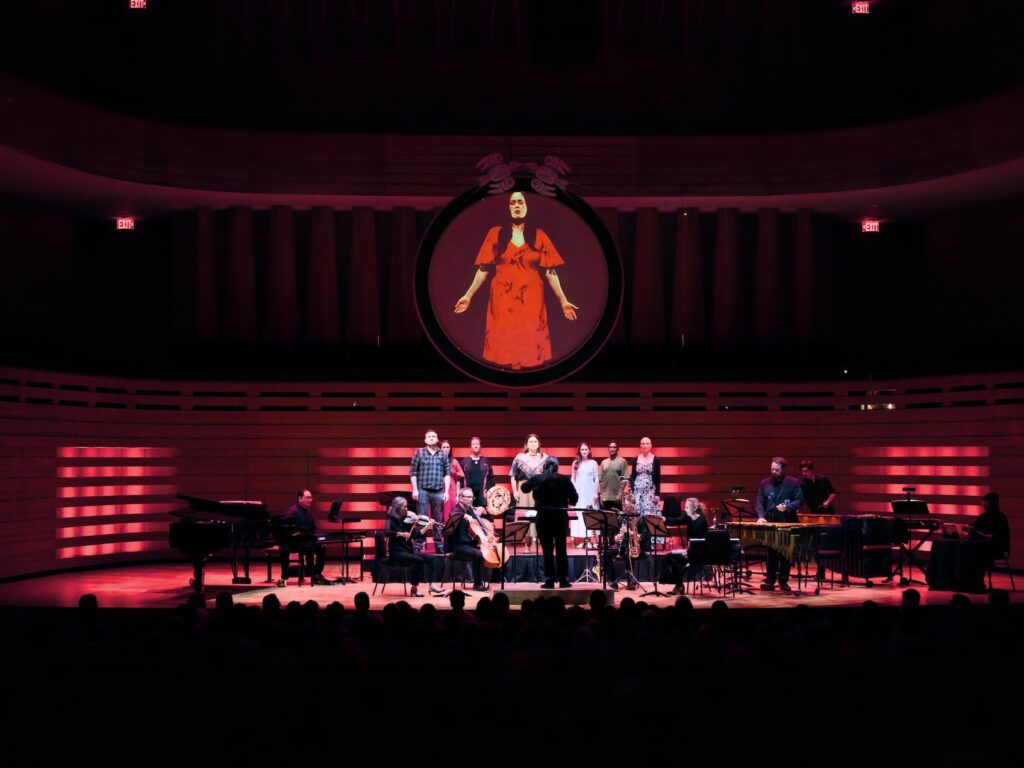We call upon federal, provincial, territorial, municipal, and Indigenous governments (hereinafter “all governments”), in partnership with Indigenous Peoples, to develop and implement a National Action Plan to address violence against Indigenous women, girls, and 2SLGBTQIA people, as recommended in our Interim Report and in support of existing recommendations by other bodies of inquiry and other reports. As part of the National Action Plan, we call upon all governments to ensure that equitable access to basic rights such as employment, housing, education, safety, and health care is recognized as a fundamental means of protecting Indigenous and human rights, resourced and supported as rights-based programs founded on substantive equality. All programs must be no-barrier, and must apply regardless of Status or location.
National Inquiry into Missing and Murdered Indigenous Women and Girls, Call for Justice 1.1
After two years of hearings, both public and confidential, spanning 15 locations across Canada attended by over 2300 respondents, the National Inquiry into Missing and Murdered Indigenous Women and Girls, its mandate ultimately expanded to include members of the 2SLGBTQIA community, issued its Final Report on June 3, 2019. Contained within its 2-volume, 1200 page collective assessment, were some 231 Calls for Justice, an exhaustive list of comprehensive recommendations spanning 19 various Themes — social, cultural, legal, judicial, educational, financial included.
The all-encompassing list of active Indigenous priorities — the urgent necessity for more effective, more transparent, more responsible policing; the obligation to address disproportionate rates of poverty impacting Indigenous peoples among them — surely could not be ignored.
Revisiting the document 5 years later, the Assembly of First Nations noted in a firm, perceptively worded rebuke that a grand total of precisely two Calls for Justice had been fully heeded and implemented, both addressing the need for a more understanding, Indigenous-oriented approach to rehabilitation on the part of Canadian correctional authorities.
Timely and important as any and all gains may be to date, however modest in number, any sweeping institutional reform and/or redress, any concerted attempt to bring missing and murdered Indigenous women and girls home was destined to be accompanied by an agonizingly slow rate of response. Promises pending. Promises unfulfilled. Missing outcomes.
Set against a backdrop of institutionalized inertia, an all too prominent element in a ghastly national panorama of violence and suffering, Missing, an electrifying portrait of a nation in nation in peril burst onto the Koerner Hall stage last week, a vivid two-act opera of transformative dimensions, libretto by Métis Dene writer/filmmaker/director Marie Clements, music by Juno Award-winning composer, Brian Current.
A co-commission, co-produced by City Opera Vancouver and Pacific Opera Victoria, first staged in 2017, the work pulses with spirit, unsettling and sensitive, searing and compassionate, often simultaneously. An amplifier of voices, a powerful generator of light and darkness, the breathless 80-minute journey to the heart of a true Canadian tragedy stunned, unblinkingly spotlit, sensitively shared.
Strictly binding a work of art — and Missing undoubtedly is one — to a specific time and place generally does a piece no great enduring favours. Missing, however, may very well be one of the very few exceptions. Abruptly altering course after a quick chilling dive into backstory, this restless, highly conceptualized chamber piece quickly pivots from geo-reality to a variety of spinning emotional compass points. What begins on B.C. Highway 16 — the infamous Highway of Tears, site of 18 documented Indigenous disappearances, all women, in the past — with a near fatal car crash quickly morphs into a visionary tale rich in symbol and metaphor.
Ava, a young non-Indigenous law student is literally brought face to face with Native Girl, an emblematic Indigenous Everywoman, recently murdered at the edge of the catastrophic accident site. A trauma-induced hallucination perhaps. Or something less explicable. An epiphany. A haunted vision. Native Girl’s decidedly mystical appearance, shape shifted as a sparrow, will obsess Ava to the point of distraction long after her broken body has healed. Only after surrendering to her newfound sense of otherness in the increasingly alien white world into which she was born does she achieve catharsis, spiritually bonding with Native Girl, souls united, Ava honouring her memory, pledging to help find her way home.
The humanity in play here is endlessly profound.
Ultimately, for all its striking abundance of glowing Indigenous artistic iconography, a recurring feature of Technical Director Andy Moro’s captivating overhead stage projections; for all its extensive employment of the Northwest Coast Indigenous-based Gitxsan language, its lively cadences and poetic expressiveness greatly enriching scena, Missing is not exclusively an Indigenous tale. The subtly evolving interconnectedness of central characters, Indigenous and non-Indigenous alike, speaks of an unmistakeable sense of shared existence, the need to be made whole, one with another; to connect to the pain and joy of knowing; to be set free from evil. To be.
Singing the two central actorly roles of Ava and Native Girl on a rain-filled Thursday night, soprano Caitlin Wood and Métis Dene Cree Chipewyan soprano Melody Courage brought an abundance of emotional fidelity and pathos to their respective assignments, hurling us headlong into Clement’s churning narrative with their acutely moving opening duet, Fly Away, Courage positively airborne, Wood, poignant and more grounded. Touchingly intense both.
Appearing as Missing’s resident centre of guiding wisdom, Dr. Wilson, mezzo-soprano Marion Newman (Kwagiulth Stó:lō First Nations with English, Irish and Scottish heritage) gifted the evening with a fine, intuitive rendering of the fictional UBC professor, supportive mentor to Ava, Newman’s steady unadorned stylings supremely well matched to character. Scrappy and enraged in a classroom confrontation with a provocative student — brilliantly sung by mezzo Andrea Ludwig with expansive savagery — (What do you see when you see me?), playful and patient during a language lesson with Ava (Nox. “Home”), Newman consistently commanded centre stage.
Tlichó Nation mezzo Michelle Lafferty appeared as Native Girl’s grief-stricken mother, singing with enormous strength and commitment. Echoing Newman’s Dr. Wilson, Lafferty’s shattered Native Mother closed the opera with a gripping challenge, indomitable and angry. Do you see me?/Do you recognize me?/I am a mother./If you have loved a child./I am you./We are waiting./We are missing./We are missing them./What are you missing?
Anishinaabe baritone Evan Korbut sang Native Girl’s brother, Angus, in a heartbreaking performance draped with grief and regret. Tenor Asitha Tennekoon appeared as Ava’s husband, Devon, each of several appearances during the evening splendidly gauged, caringly sung.
Seen through a purely compositional lens, Currents’ surging, uninhibited score is built on much the same design principles as other operatic aspects of this singularly original theatrical structure. Expression is mutable, linked not to a single creative impulse but rather scattered across a shifting, dynamic soundscape. Music, quite simply, exists outside any straightforward bounded box. Prelude and Epilogue ring, thrum and tumble, balanced on the edge of tunefulness and expressionism. Elsewhere, recitatives, solos, duets, all follow their own notions of melody and tone. Native Mother’s bitter lament There Should Be No Sun begins in Messiaen territory, leaping into the world of Broadway ballad with Currents’ beautiful Mother’s Aria, ending in a fretful tangle of dissonance.
What does emerge from all this eclescticism, however, by way of unifying thread is the implied beat of Gitxsan drums reflected in steady throbbing rhythms and upbeat tempi. The effect when played by cello, violin, glockenspiel, xylophone, piano and winds is utterly unique and quite extraordinary. Newman’s accompaniment to A Gitxsan Wedding on authentic Indigenous hand drum proved particularly entrancing.
Eastman School of Music’s Timothy Long (Muscogee Thiopthlocco Choctaw), long associated with Missing, like Newman, since early development, conducted the latest iteration, an Eastern Canada premiere.
A legendary work, urgent and powerful. Courageously programmed, compellingly semi-staged in concert, the Toronto Summer Music Festival has achieved something remarkable here.


